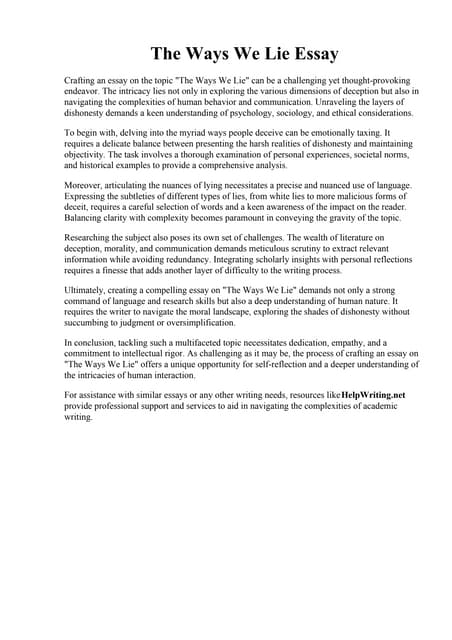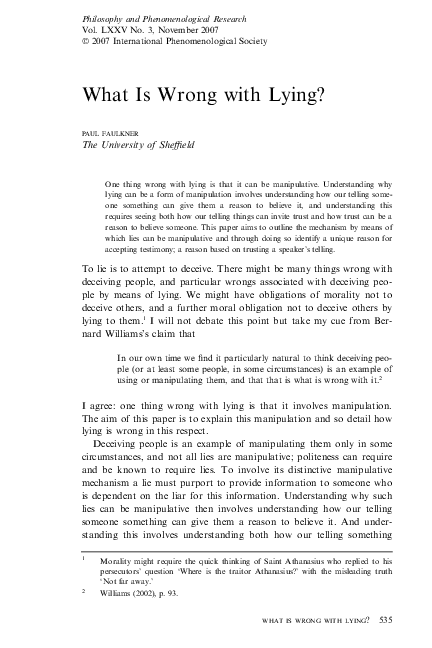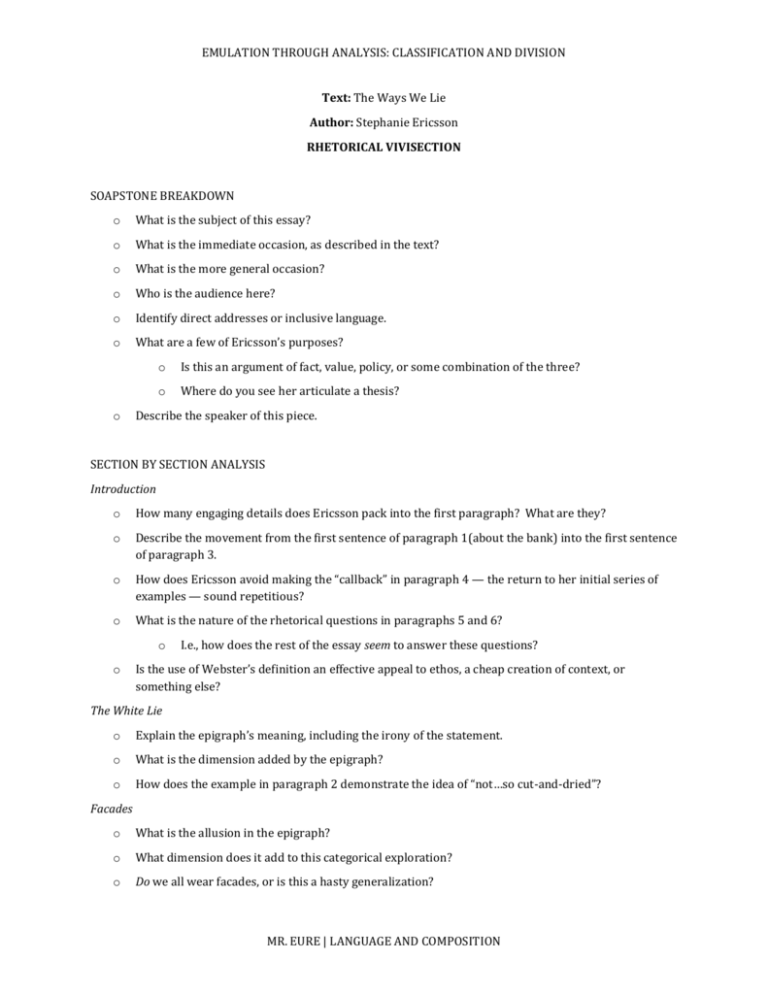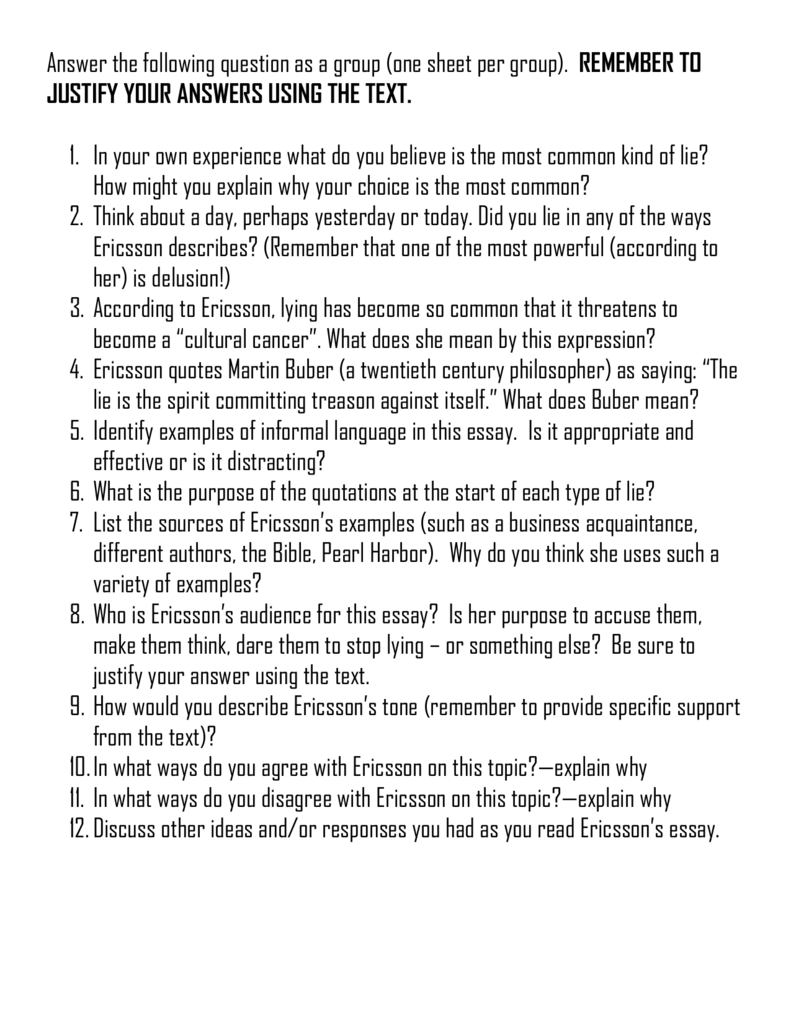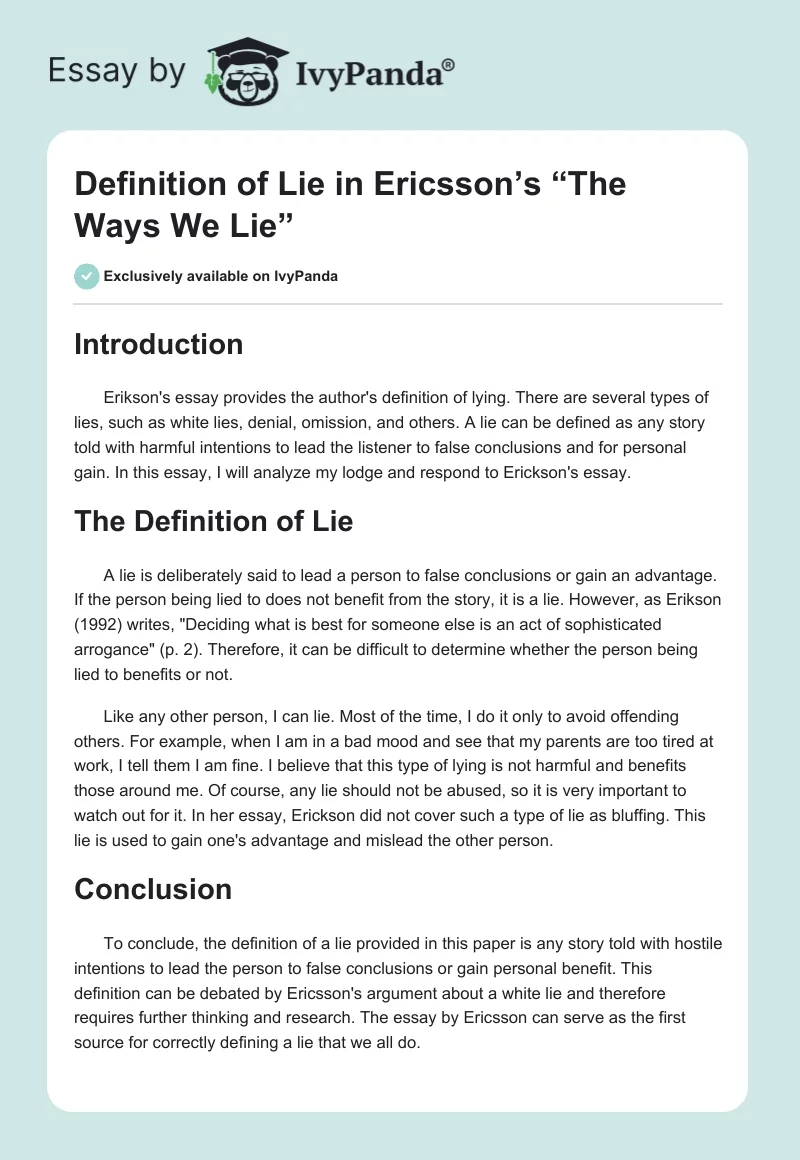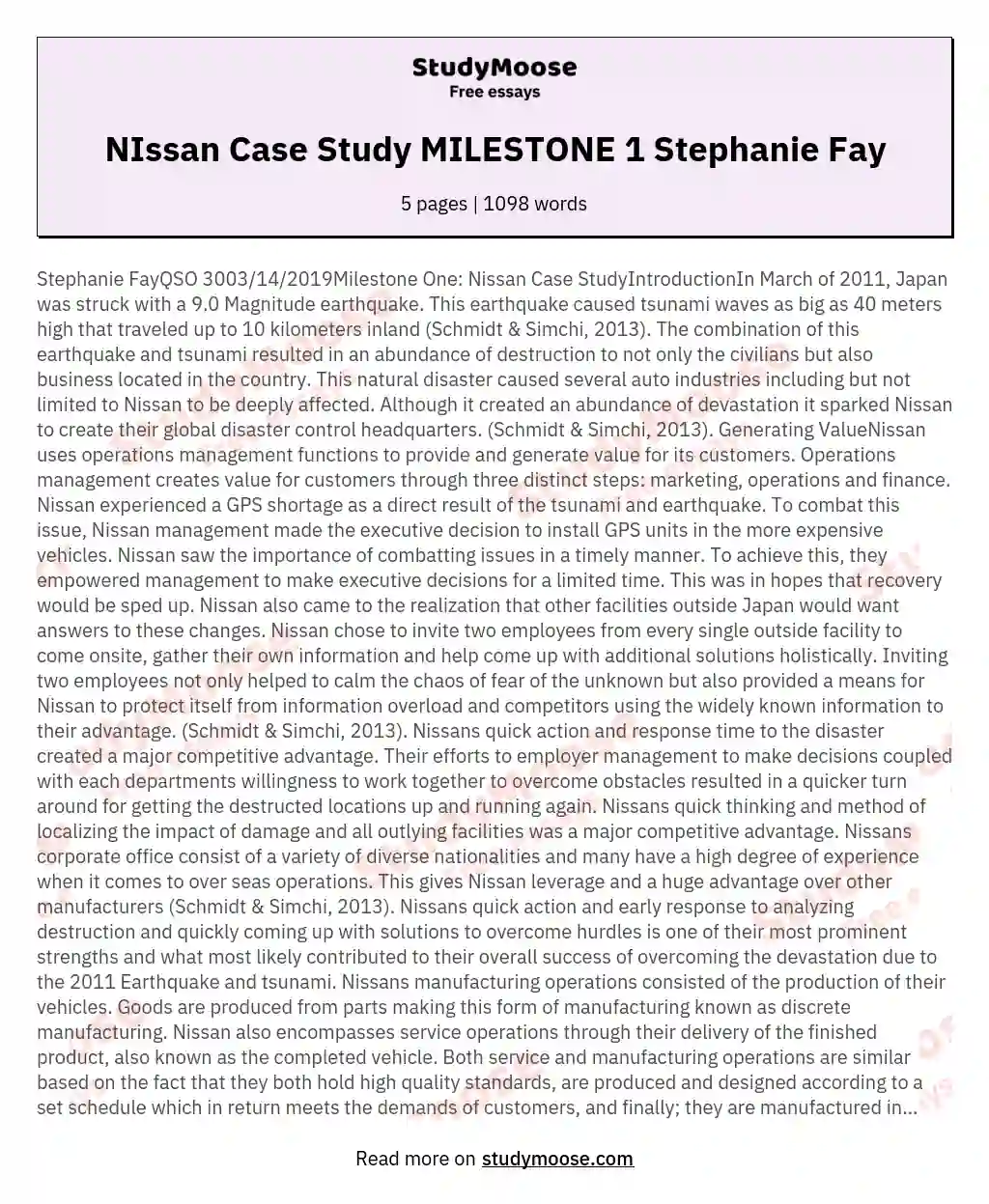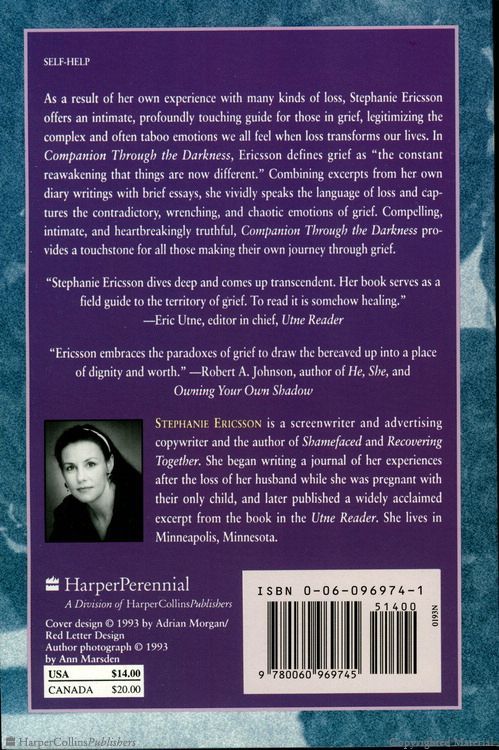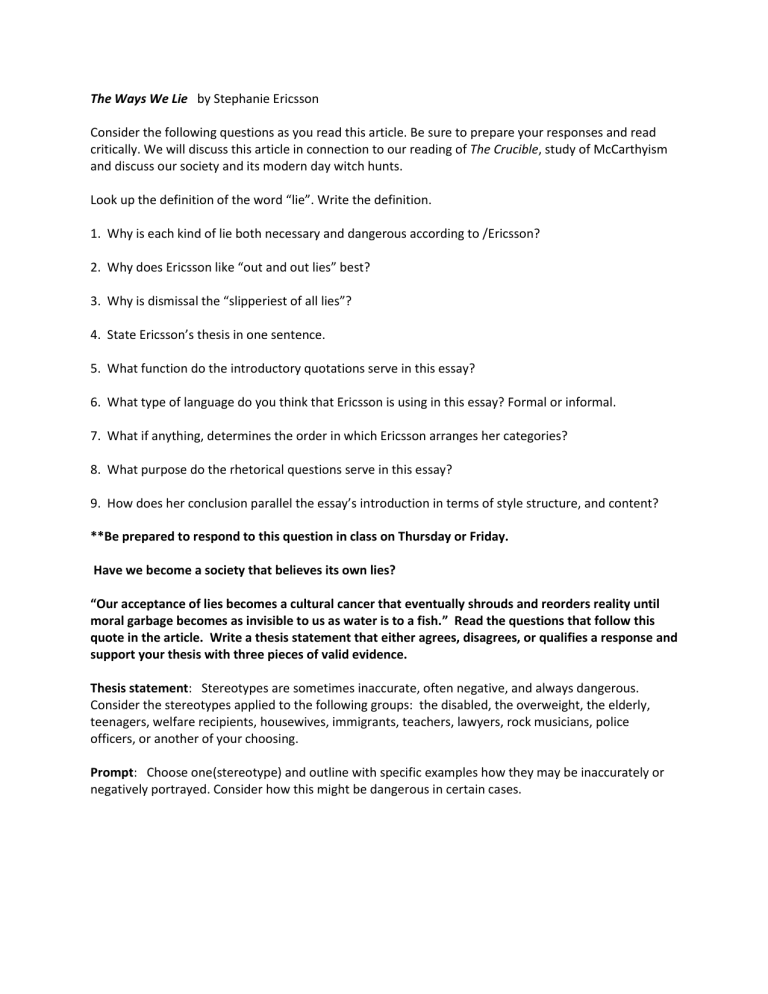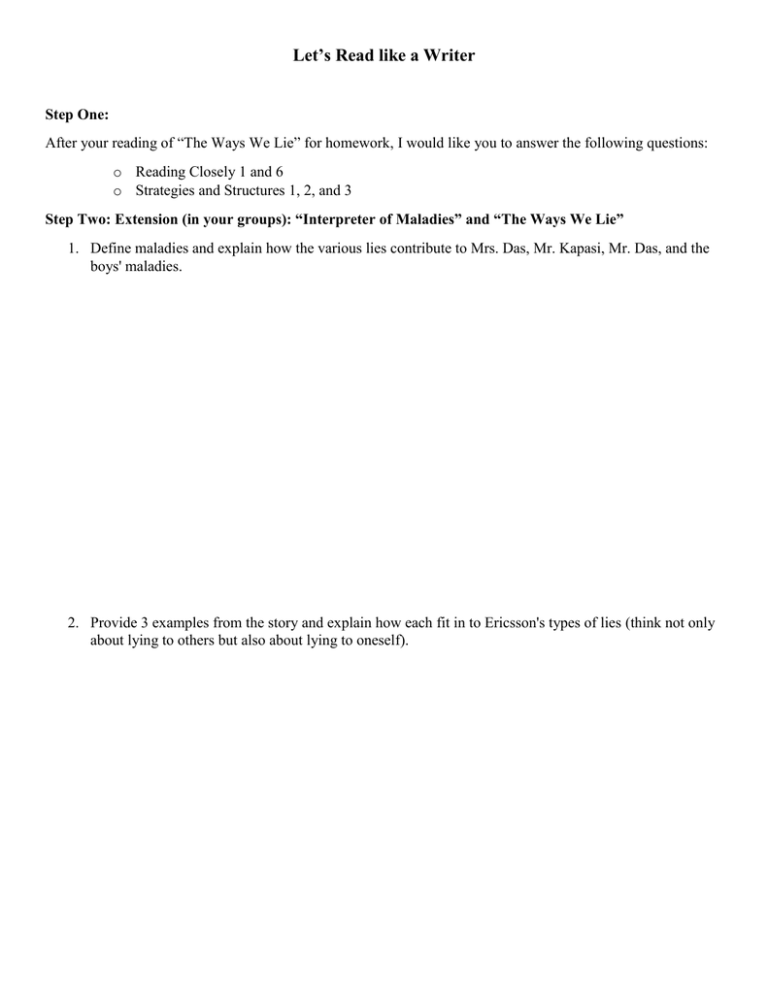The Ways We Lie Stephanie Ericsson Analysis
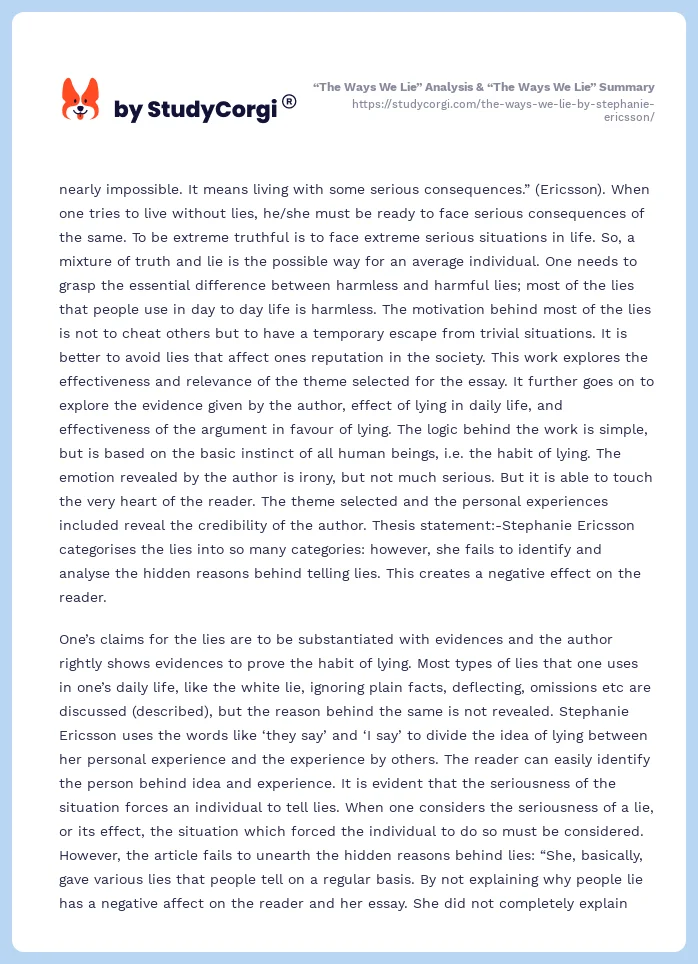
Ever wonder how much we fib? We're not talking about whoppers here, but the little white lies that seem to pop up daily. Turns out, we're all pretty good at bending the truth, sometimes without even realizing it!
In her essay, "The Ways We Lie," Stephanie Ericsson dives headfirst into this fascinating world. She doesn't just wag a finger; she shines a light on the surprising and often understandable reasons behind our little deceits.
The Truth About Lying (Ironically!)
Ericsson isn't out to condemn us all. She's more interested in understanding the shades of gray that exist between pure honesty and outright falsehood. Her exploration is like holding up a prism to the light, revealing a rainbow of deceptive tactics.
The Little White Lie
Ah, the classic! We've all told one. “That outfit looks great on you!” even when it… doesn't. It's often about sparing feelings, avoiding conflict, or just greasing the social wheels.
Ericsson points out that these small lies can be surprisingly helpful. They keep the peace and prevent unnecessary drama.
The Facade
This is where we pretend to be someone we're not. We project an image of confidence, competence, or happiness, even when we're feeling anything but. Think of putting on a brave face after a tough day at work.
It can be exhausting, but it’s a common survival mechanism. Ericsson understands the pressure we feel to present a polished version of ourselves to the world.
Deflection and Omission
Ever skillfully dodged a question? That's deflection. And what about those details you conveniently *forget* to mention? That's omission. Both are ways of hiding the truth without technically lying.
It is kind of like playing a verbal game of hide and seek, with truth being the thing we bury.
The Big Ones: Outright Lies and Dismissal
Of course, there are the outright lies - the deliberate attempts to mislead. Then there’s dismissal, when we deny someone else's feelings or experiences, essentially invalidating their reality.
Ericsson makes it clear that these are more serious territory. They erode trust and can cause real harm.
Why Do We Do It?
Ericsson’s essay isn't just a list; it's an investigation into human behavior. She explores the motivations behind our lies, from self-preservation to social expectations.
Sometimes, we lie to protect ourselves or others. Sometimes, we lie to maintain our social standing. The reasons are as varied as the lies themselves.
Ericsson's analysis helps us see that lying is a complex phenomenon. It's intertwined with our needs, fears, and relationships.
The Takeaway
"The Ways We Lie" isn't meant to make us feel guilty. It's more of a gentle nudge towards self-awareness. Are we mindful of the lies we tell? Are we aware of their impact?
Ericsson encourages us to consider the cost of our deceptions, both to ourselves and to others. Honesty might be the best policy, but understanding why we stray from it is equally important.
"We lie. We all do. The reasons vary, but the result is the same: a tangled web of deceit that can be difficult to unravel." - paraphrased from Stephanie Ericsson.
So next time you catch yourself telling a little white lie, don't beat yourself up. Just take a moment to reflect. Why did you do it? Was it necessary? And what are the potential consequences? It is just a fun new angle to view how we interact in our daily lives.


